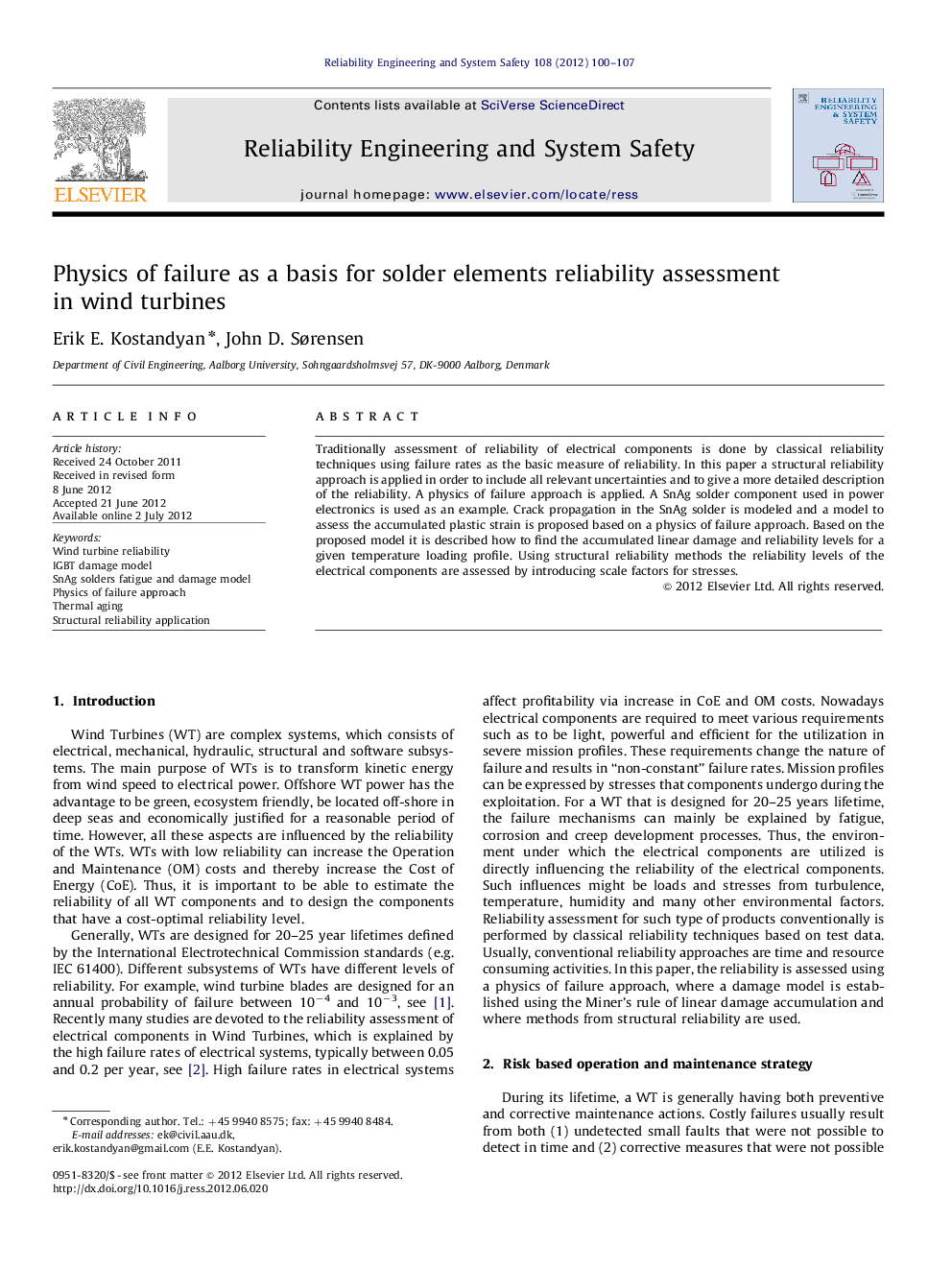| Article ID | Journal | Published Year | Pages | File Type |
|---|---|---|---|---|
| 805722 | Reliability Engineering & System Safety | 2012 | 8 Pages |
Traditionally assessment of reliability of electrical components is done by classical reliability techniques using failure rates as the basic measure of reliability. In this paper a structural reliability approach is applied in order to include all relevant uncertainties and to give a more detailed description of the reliability. A physics of failure approach is applied. A SnAg solder component used in power electronics is used as an example. Crack propagation in the SnAg solder is modeled and a model to assess the accumulated plastic strain is proposed based on a physics of failure approach. Based on the proposed model it is described how to find the accumulated linear damage and reliability levels for a given temperature loading profile. Using structural reliability methods the reliability levels of the electrical components are assessed by introducing scale factors for stresses.
► Physics of failure as a basis for reliability assessment. ► Failure mechanism based on component microstructure. ► SnAg solder fatigue and damage modeling in Wind Turbines. ► Structural reliability techniques for electrical components reliability assessment. ► Scale factor estimation for temperature loadings.
